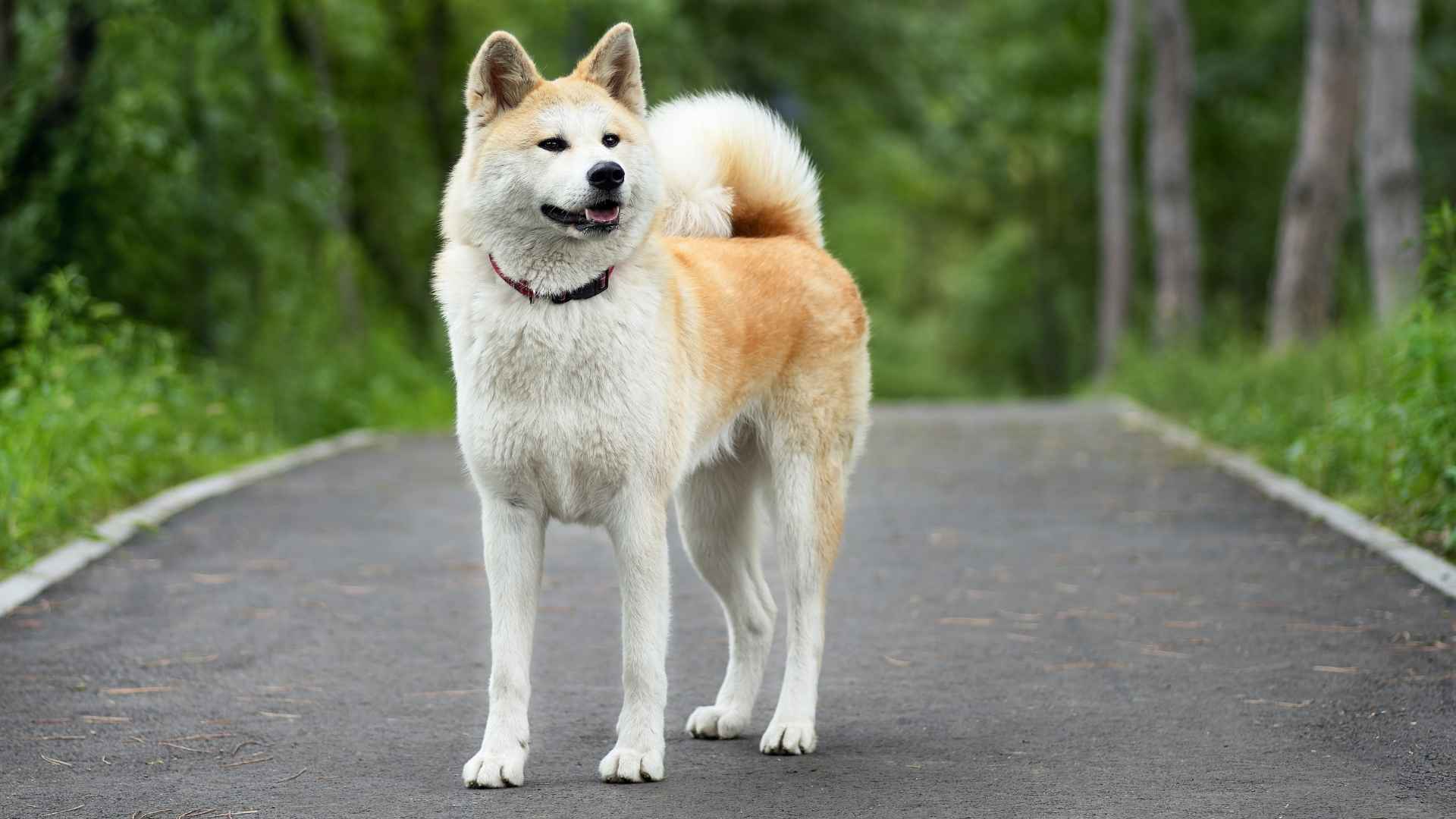It’s fascinating to think that the loyal pets seen today once shared the wild instincts of wolves. The journey from fierce predator to trusted companion began tens of thousands of years ago—around 30,000 to 40,000 years ago, according to the American Kennel Club (AKC).
Back then, early humans likely adopted and hand-raised wolf pups, choosing only those that showed a natural ability to bond and socialize. Over generations, these more social pups became reproductively isolated from their wild cousins, slowly giving rise to the first dog breeds.
This long process of selective companionship led to the creation of many dogs with distinct traits, temperaments, and appearances. But even after thousands of years, some dog breeds that resemble wolves still carry that majestic, wild look.
These wolf-like dog breeds are not only known for their striking appearance but also for their loyalty, intelligence, and high energy personalities.
Dog Breeds That Resemble Wolves
Here are seven dog-like wolf breeds:
1. Siberian Husky
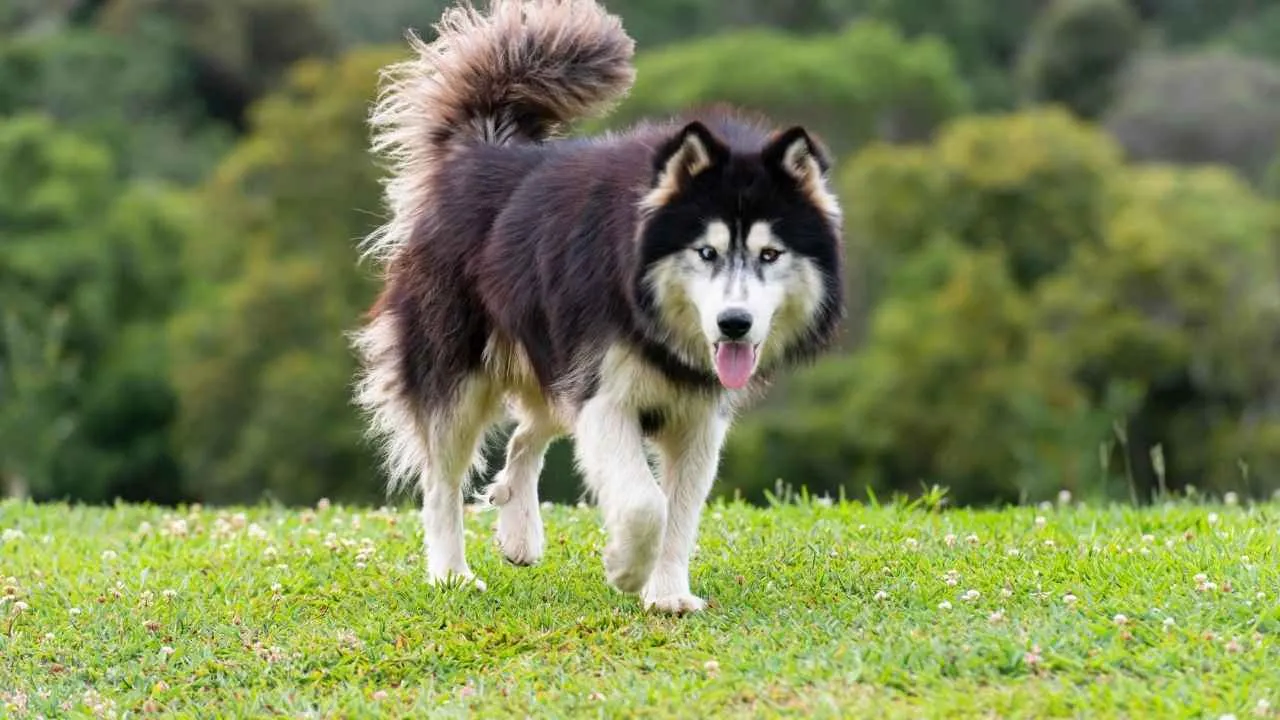
Looks That Resemble Wolves
The Siberian Husky is often mistaken for an actual wolf. Their wolf-like appearance makes them a popular choice for roles in films and TV shows, where they’re frequently used to portray wolves. Most people unfamiliar with dog breeds often assume Huskies are either part wolf.
Origin and Purpose
Originally bred in the icy regions of Siberia, Huskies were used by native tribes to pull sleds across long distances. Their role as working dogs helped them develop impressive stamina and a strong, determined work ethic.
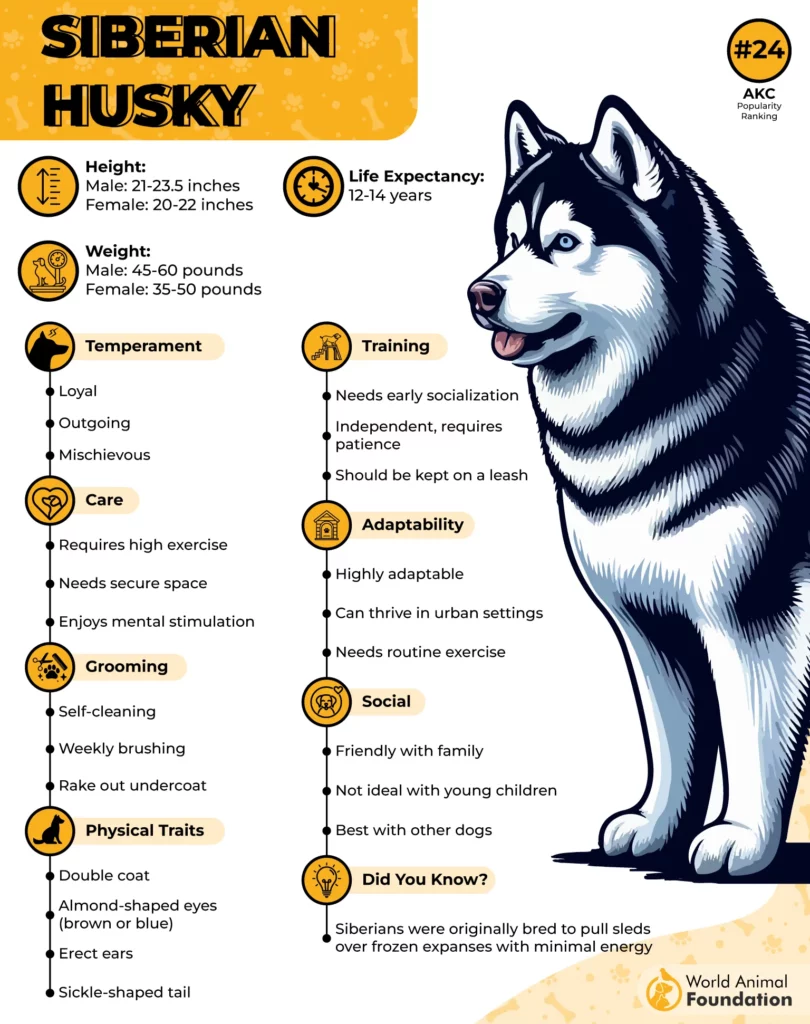
Appearance
They feature a medium-sized build, a dense double coat, and eye-catching colors that include blue, brown, or even heterochromia, where each eye is a different color.
Unique Behaviors and Traits
One of the more wolf-like behaviors Huskies display is their tendency to howl instead of bark, often joining in when they hear sirens or music. Despite their wild look, they are not ideal guard dogs, as they tend to be friendly with strangers and lack strong territorial instincts.
Energy and Temperament
These dogs are extremely strong-willed, requiring regular exercise, mental stimulation, and consistent training. With their playful and affectionate nature, Huskies make wonderful companions, but their high prey drive means they may not be suited for homes with other pets like rodents or cats.
2. Chow Chow
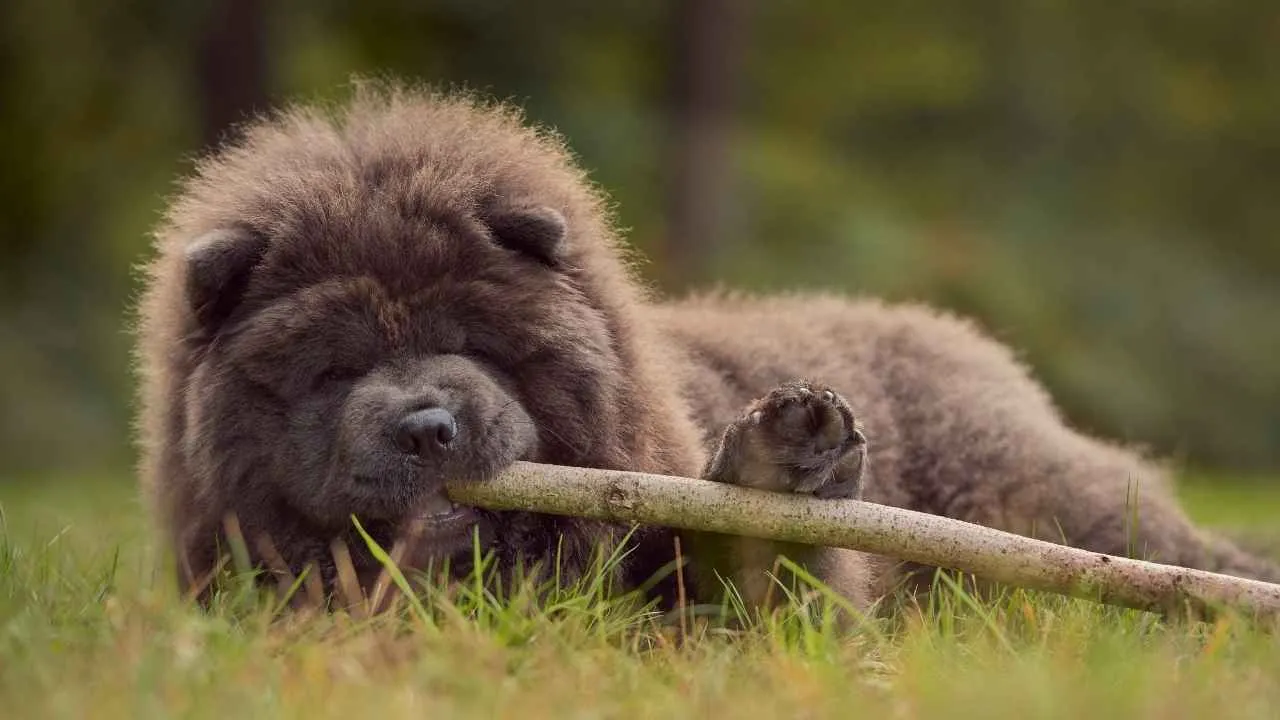
Looks That Resemble Wolves
The Chow Chow stands out as one of the more unique dog breeds that resemble wolves. This rare dog breed shares a close genetic connection to ancient wolves, making its presence even more fascinating.
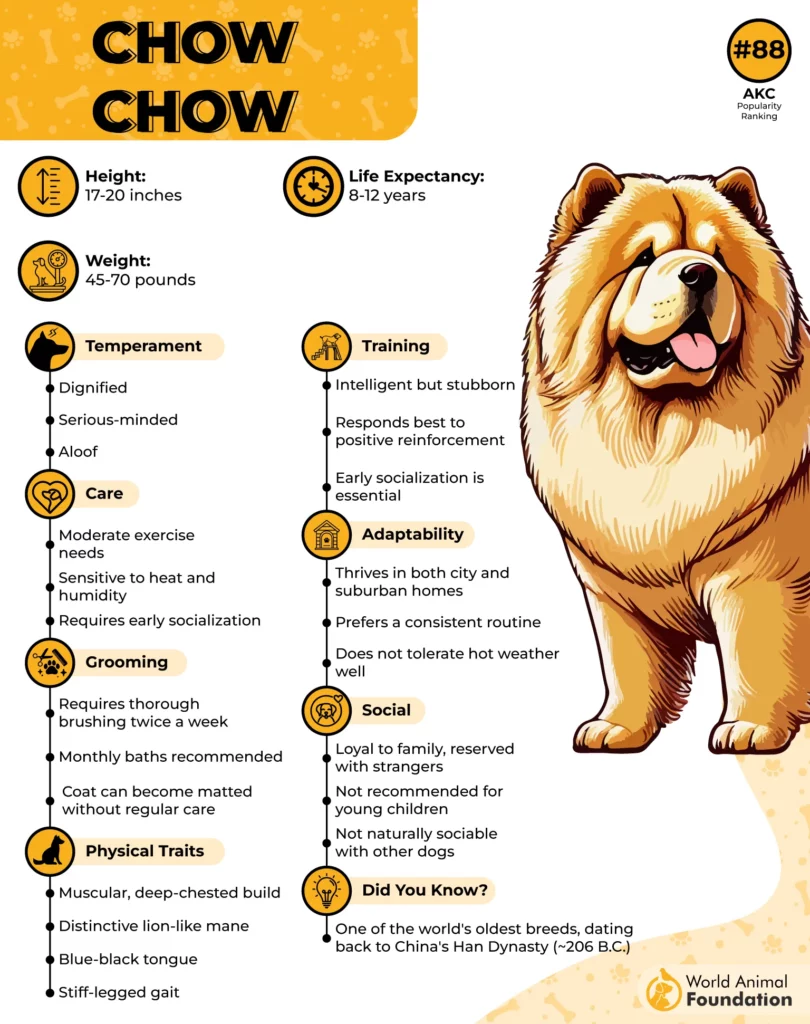
With a sturdy build, deep-set eyes, and a somewhat aloof expression, it has a regal, almost primitive appearance.
Origin and Purpose
According to Britannica, dating back to ancient China, the Chow Chow is one of the oldest known dog breeds, with roots stretching to the Han dynasty around 206 BCE. Originally bred for hunting, guarding, and even pulling carts, they were purposely bred for multiple tasks.
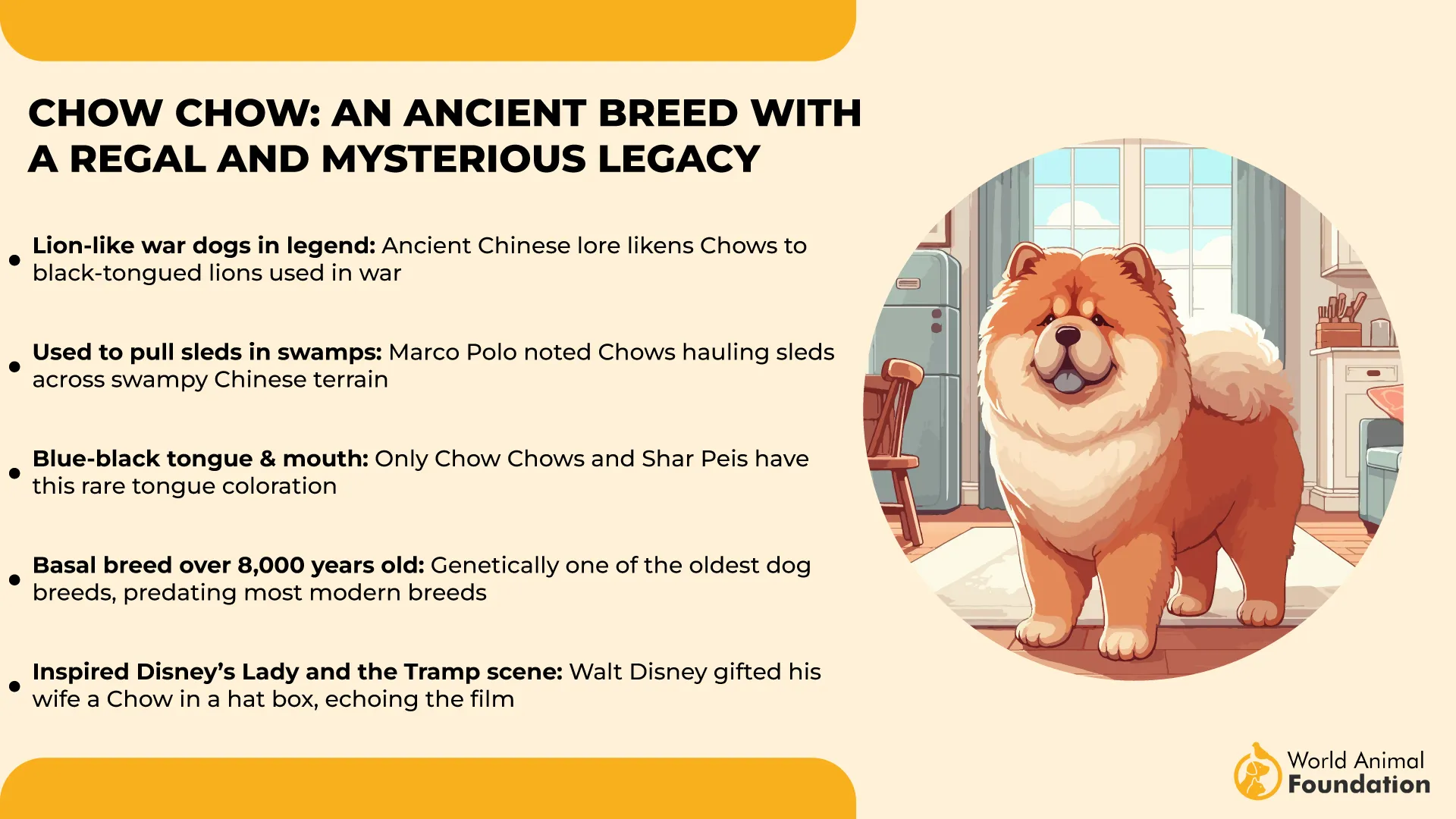
Appearance
This breed is known for its profuse double coat, especially dense around the neck, giving a mane-like look similar to a lion or a wild wolf-like figure.
The coat can be rough or smooth and comes in striking shades of red, black, cinnamon, blue, or cream. A truly distinguishing feature is their blue-black tongue, a trait not shared with most dogs.
Unique Behaviors and Traits
The Chow Chow has a stiff-legged walk due to its straight hind legs, giving it a proud and deliberate gait. It also makes an excellent watchdog, always alert and highly protective of its family.
However, this breed is not naturally social or outgoing, and early socialization is important to help them adjust to other dogs, strangers, and pets.
Energy and Temperament
The Chow has a calm, independent personality. Their strong-willed nature makes them a challenge for first-time owners, but with firm and consistent training, they can be incredibly loyal, affectionate, and obedient.
3. Saarloos wolfdog
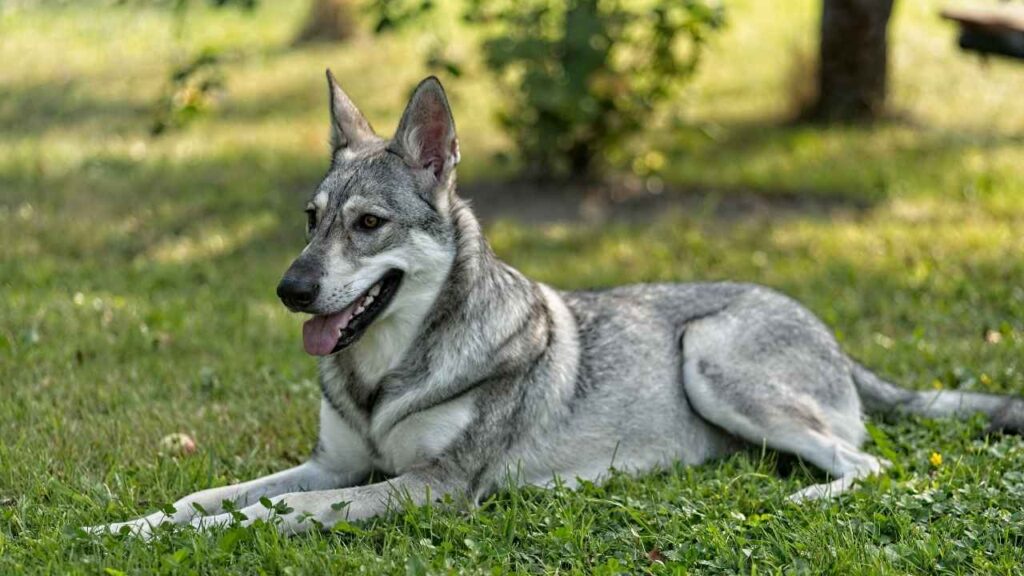
Looks That Resemble Wolves
The Saarloos Wolfdog is a true standout among breeds that look like wolves. With its natural posture, elongated muzzle, and alert expression. Many dog breeds have subtle wolf-like traits, but this one captures the essence with its lean build and piercing eyes that echo the mystery of its ancestry.
Origin and Purpose
This striking breed was originally bred in the Netherlands by crossing a wolf with a German Shepherd. Over generations, the Saarloos Wolfdog has retained its sharp instincts while becoming more manageable in a modern setting.
Appearance
The breed features a dense, medium-length coat that’s built for endurance and weather resistance. Their coats come in wolf gray, red, white, agouti, and even parti-color—a palette that contributes to their natural, untamed beauty.
Unique Behaviors and Traits
These dogs are typically reserved around strangers and display a sense of independence uncommon in most dogs. They’re not known to bark excessively but may howl, especially when stimulated or seeking attention from their pack.
Energy and Temperament
This breed is energetic, thrives on movement, and requires plenty of space for roaming. They enjoy daily exercise and need an environment where they can stretch their legs and follow their instincts.
Best suited for experienced owners who appreciate a more strong-willed and self-directed temperament.
4. Shikoku
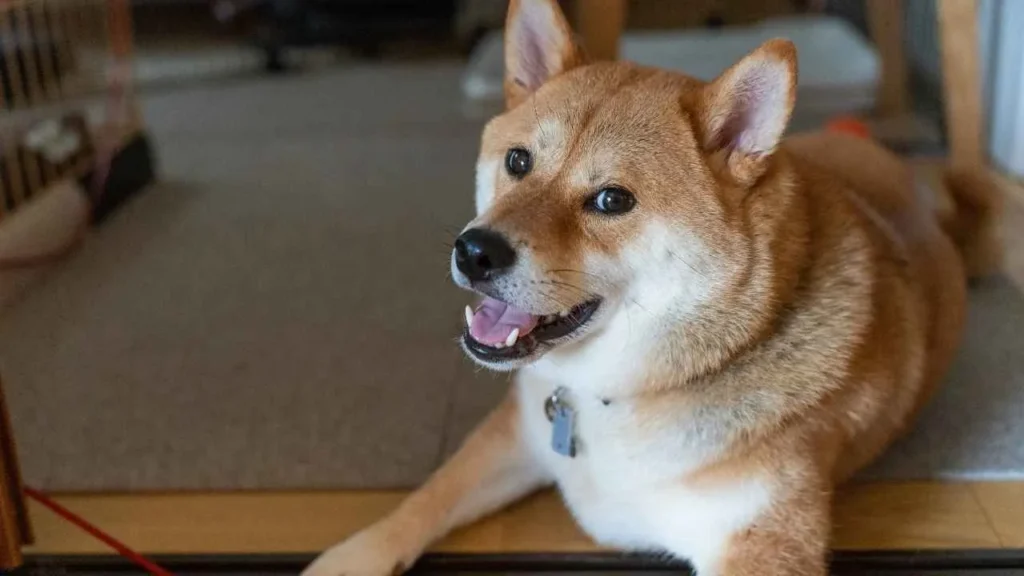
Looks That Resemble Wolves
The Shikoku is a small but striking dog that combines primitive beauty with athletic grace. With its erect ears, curled or sickle-shaped tail, and sharp, upward-slanting eyes, it has a distinct appearance that places it among the more visually wild-looking dog breeds.
Origin and Purpose
This rare dog breed originates from Japan’s Shikoku Island, where it was bred for hunting wild boar in the steep mountains of Kochi Prefecture.
Its roots trace back to ancient times, classifying it among the “primitive breeds” known for their instincts and close genetic ties to wolves.
Appearance
The Shikoku stands 17–22 inches tall and weighs between 35–55 pounds. It sports a double coat—a soft undercoat beneath a coarse, straight outer coat—perfect for withstanding outdoor environments.
Coat colors usually blend in earthy tones, enhancing their rugged charm. Its small, triangular eyes, dark brown and slightly tilted, add to its keen and watchful look.
Unique Behaviors and Traits
Shikokus are known for their loyalty and devotion to their family, though they can be wary of strangers. Early socialization is key to nurturing their naturally reserved temperament. These smart and adaptable dogs are described as having “good judgment,” a rare compliment among many dog breeds.
Energy and Temperament
This breed is high energy and thrives on adventure. Shikokus love having tasks and outdoor challenges, benefiting greatly from daily exercise and exploration.
Their independent streak, paired with their hunting background, makes them both determined and thoughtful companions.
5. Akita Inu
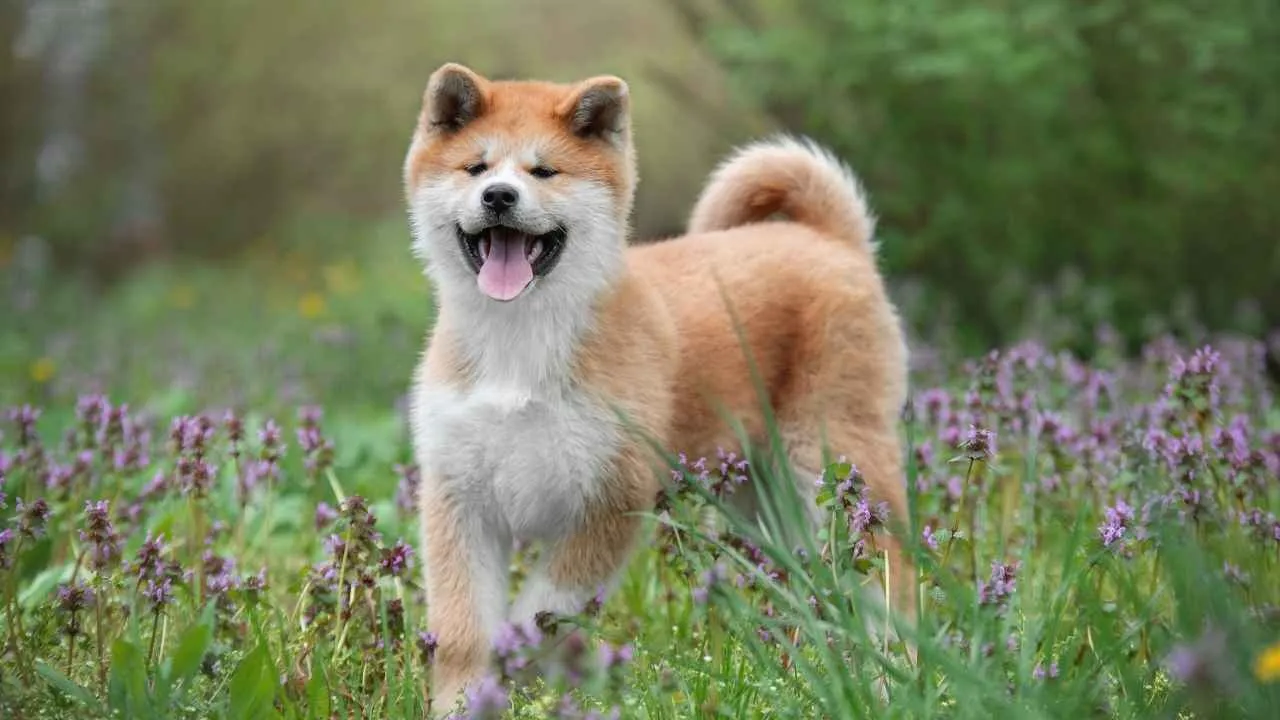
Looks That Resemble Wolves
The Akita Inu is one of those breeds that look like it could have stepped out of the wild. With a wolf-like appearance, marked by its thick fur, strong build, and alert expression.
The Akita naturally draws comparisons to carpathian wolf types. Their upright ears and broad head further highlight their ancient connection to the wild.
Origin and Purpose
According to PetMD, the Akita once served the elite as a hunter and guardian in Japan. These pups weren’t just admired for their looks—they were treasured for their bravery. Over time, they became a national symbol of protection and loyalty.
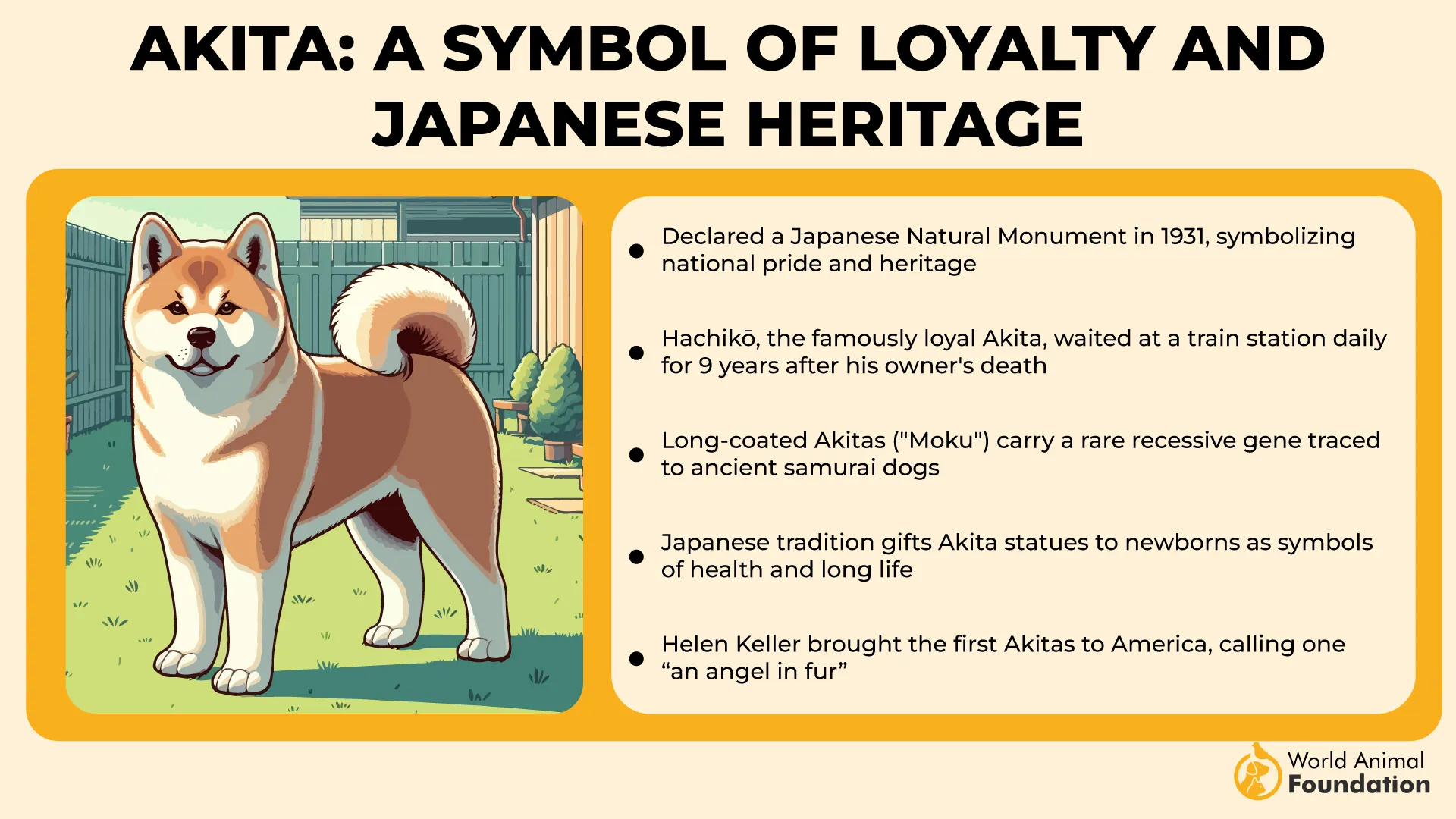
Appearance
Their weather-resistant coat comes in shades of brown, white, grey, and black, and is both beautiful and functional. Their coat helps protect against harsh temperatures, while their webbed toes allow for easy movement on snow or rough terrain.
Unique Behaviors and Traits
Akitas are known for their calm and steady personality. They’re extremely loyal and display a deep bond with those they love. However, their naturally cautious nature makes early training and exposure to strangers important. These dogs tend to be independent.
Energy and Temperament
Akitas are smart and observant, with a tendency to think for themselves. They may not always be eager to please, but when trained well, they’re highly obedient and trustworthy.
Their instincts make them excellent protectors, yet they remain quiet and composed, rarely barking without reason. While not overly playful, they are deeply affectionate with those they trust.
6. Utonagan
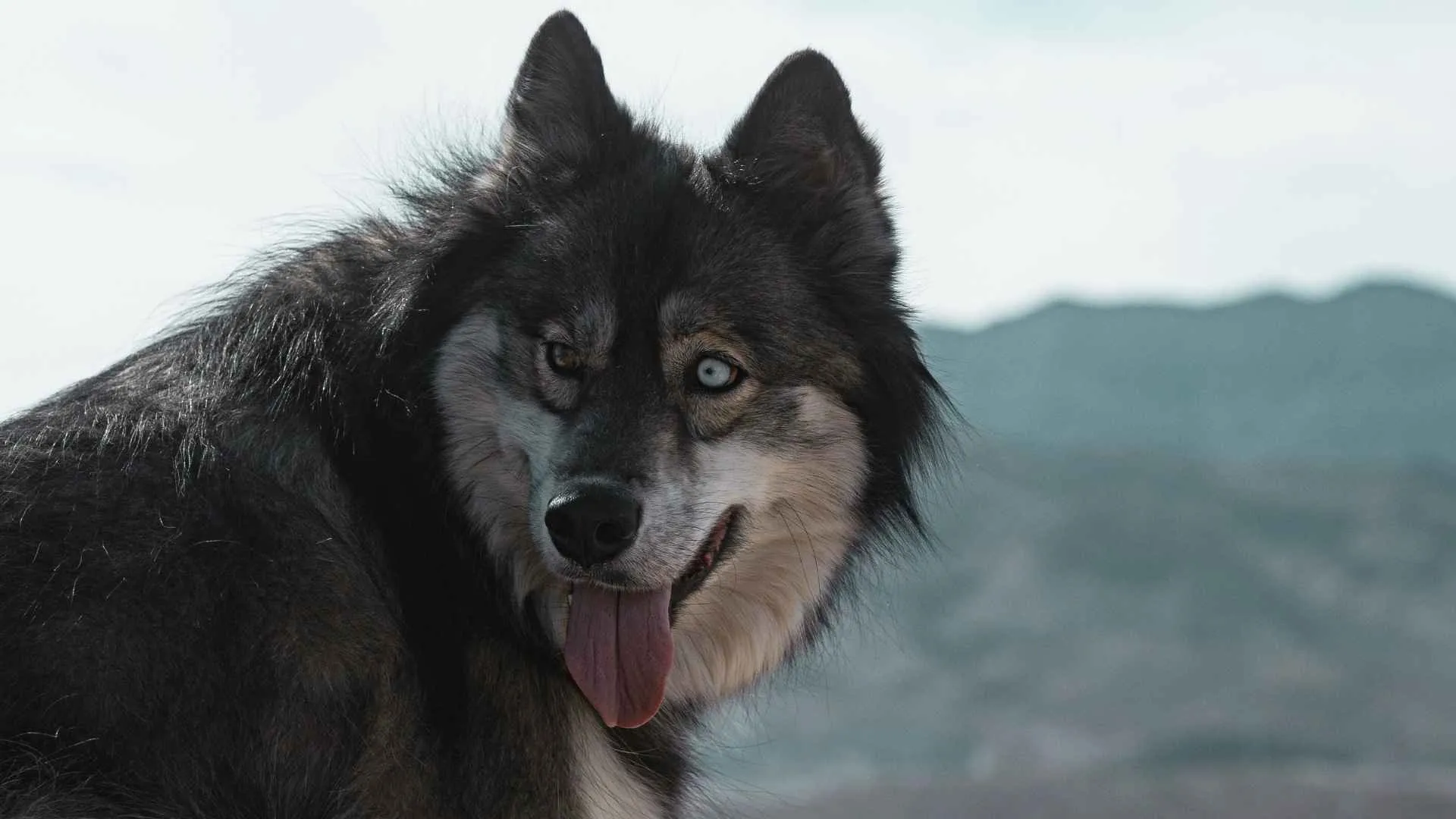
Looks That Resemble Wolves
The Utonagan is known for its wolf-like appearance, boasting a majestic, fluffy double coat and sharp, intelligent eyes. Its large frame, standing between 23 to 30 inches and weighing 65 to 100 pounds, makes it one of the more striking dog breeds that closely resemble wolves.
Origin and History
Unlike other breeds that were originally bred for specific tasks like pulling sleds or herding reindeer, the Utonagan is a mixed breed dog created to look like wolves while keeping the gentle personality of domestic dogs.
Appearance
This breed’s coat is one of its most distinctive traits—thick, lush, and high-maintenance. Their double coat sheds heavily twice a year, and regular grooming is essential.
The Utonagan’s strong, athletic build and overall size make it stand out among many dog breeds bred for companionship. Their look blends strength with softness, combining power and grace.
Unique Behaviors and Traits
They are highly socialized when raised well. Their tendency to bond deeply with families makes them ideal for homes with other pets or children, though early training helps ensure smooth interactions.
They’re not aggressive or overly wary—instead, they love companionship and thrive in pack-like environments.
Energy and Temperament
These dogs are not just pretty faces—they’re full of energy and need regular daily exercise to stay healthy and happy. Utonagans do best with owners who can provide both physical activity and mental stimulation.
7. Tamaskan Dog
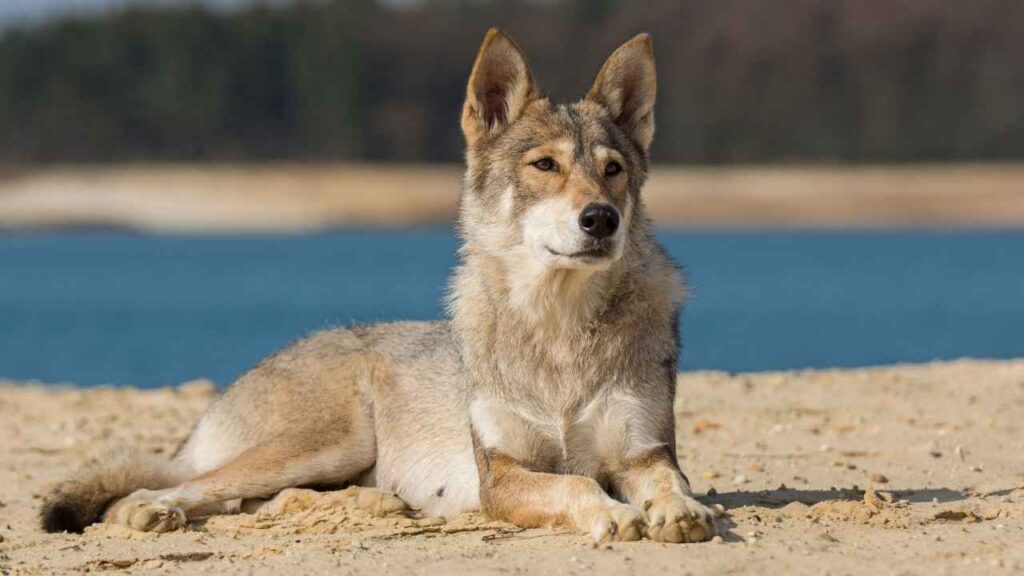
Looks That Resemble Wolves
It belongs to a category of dog breeds that resemble wolves, impressing many with its thick coat, upright ears, and focused gaze.
Though its appearance is wild, the Tamaskan is not a wolf hybrid—it was bred to mimic the look of wolves while having the personality of a friendly companion.
Origin and History
This unique breed originated in Finland and is a mix of many dog breeds, including the German Shepherd, Alaskan Malamute, and Siberian Husky. Unlike some other dogs, Tamaskans were bred not for a specific job, but to create a balanced dog that thrives in modern homes.
Appearance
Tamaskans stand tall at around 23 to 30 inches and weigh between 65 to 100 pounds. Their fluffy double coat requires regular grooming, especially during seasonal shedding. Their thick fur helps them endure cold climates, similar to dogs that once pulled sleds across icy terrain.
Unique Behaviors and Traits
Tamaskans are known for being obedient, calm, and highly affectionate toward their families. They thrive in households with children, and their gentle temperament makes them suitable for life alongside other pets.
While they are intelligent and easy to train, they can also show signs of being independent, so early training is important to prevent unwanted behavior.
Energy and Temperament
Like most dogs, the Tamaskan needs daily exercise to stay healthy and happy. Without enough activity, they may become restless or bark excessively. They’re also known for their tendency to howl instead of bark—another reason they remind people of wolves.
Conclusion
From ancient times to modern homes, the fascination with wolf-like dog breeds has only grown stronger. With their primal beauty and striking features, these breeds stir something wild in us. Many of them were purposely bred to withstand harsh climates or protect livestock, yet today, they are cherished as loyal pets and steadfast companions.
It’s easy to see why these breeds captivate so many—they combine the majestic allure of the Carpathian wolf with the affectionate, obedient nature we’ve come to love in dogs. Yet, they aren’t for everyone. These breeds that look like wolves tend to be smart, sometimes stubborn, and often need experienced, active owners who can meet their physical and emotional needs.


